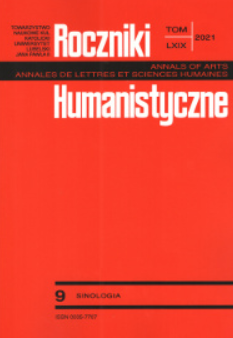CHINESE GARDENS AS A NATIVITY SCENE: MATTEO RIPA’S DESCRIPTION OF THE KANGXI EMPEROR’S CHANGCHUN GARDEN IN BEIJING
CHINESE GARDENS AS A NATIVITY SCENE: MATTEO RIPA’S DESCRIPTION OF THE KANGXI EMPEROR’S CHANGCHUN GARDEN IN BEIJING
Author(s): Albert KozikSubject(s): Cultural history, Aesthetics, 18th Century, Italian literature
Published by: Towarzystwo Naukowe KUL & Katolicki Uniwersytet Lubelski Jana Pawła II
Keywords: Chinese gardens; Qing gardens; European gardens; Matteo Ripa; chinoiseries; Changchun Yuan; Yuanming Yuan;
Summary/Abstract: This article examines the description of the Changchun Garden in eighteenth-century Beijing, featured in Matteo Ripa’s Storia della Fondazione della Congregazione e del Collegio de’ Cinesi. An Italian missionary at the court of the Kangxi Emperor, Ripa had a chance to see and describe both the imperial parks and the intricacies of Chinese court etiquette. His detailed account, a precious source of information on the Changchun park, was accompanied by commentaries aimed at explaining the differences between “European” and “Chinese” aesthetic values. Therefore, this article offers a critical analysis of the account as a historical source, discussing the accuracy of some of the details described by Ripa, and subsequently provides an interpretation of the way he perceived Chinese parks, with an emphasis on his explanations of the “Chinese style” of laying out gardens. Finally, the last part of the article is dedicated to a comparison between a Neapolitan nativity scene (presepio) and the Qing gardens as drawn by Ripa at the end of his description, in order to demonstrate the “artificial naturalness” of Chinese parks.
Journal: Roczniki Humanistyczne
- Issue Year: 69/2021
- Issue No: 9
- Page Range: 175-188
- Page Count: 14
- Language: English

